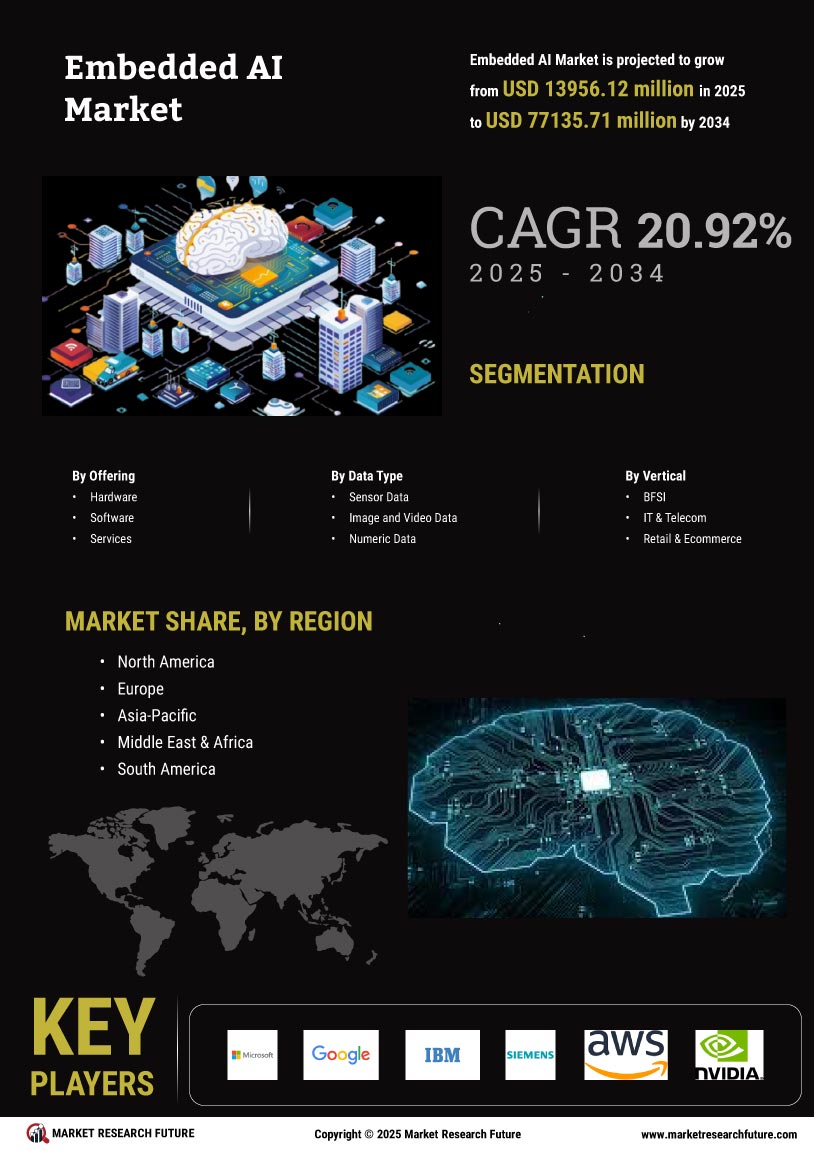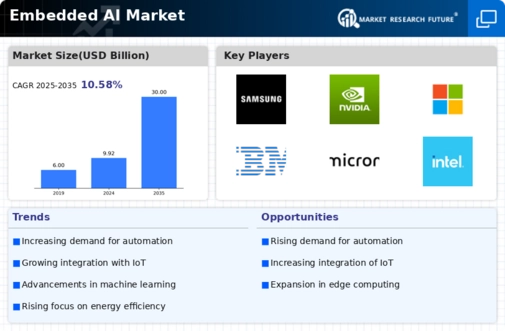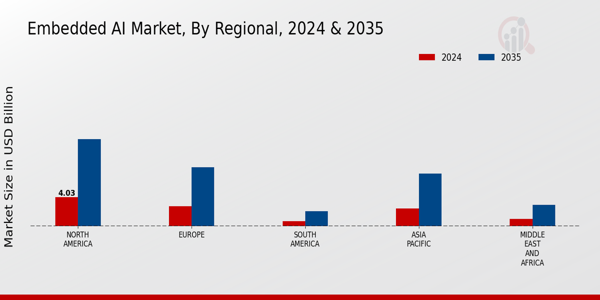Market Growth Projections
The Global Embedded AI Market Industry is projected to experience robust growth, with estimates indicating a market size of 9.92 USD Billion in 2024 and a remarkable increase to 30 USD Billion by 2035. This growth trajectory suggests a compound annual growth rate of 10.58% from 2025 to 2035, reflecting the increasing integration of AI technologies into various applications. The expansion is driven by factors such as rising consumer demand for smart devices, advancements in machine learning, and a growing emphasis on automation across industries. These projections underscore the potential for embedded AI to transform numerous sectors, enhancing efficiency and innovation.
Increased Focus on Automation
The Global Embedded AI Market Industry is witnessing an increased focus on automation across various sectors, including manufacturing, logistics, and agriculture. Businesses are increasingly adopting embedded AI solutions to streamline operations, reduce human error, and enhance productivity. For example, automated machinery equipped with embedded AI can optimize production processes by analyzing real-time data and making adjustments autonomously. This trend not only improves efficiency but also reduces operational costs, making it an attractive proposition for companies. As organizations continue to embrace automation, the demand for embedded AI technologies is expected to rise, further propelling market growth.
Rising Demand for Smart Devices
The Global Embedded AI Market Industry experiences a surge in demand for smart devices, which integrate artificial intelligence capabilities directly into hardware. This trend is driven by consumer preferences for enhanced functionalities in everyday products, such as smartphones, home appliances, and wearables. As of 2024, the market is projected to reach 9.92 USD Billion, reflecting a growing inclination towards intelligent systems that offer personalized experiences. The proliferation of Internet of Things (IoT) devices further fuels this demand, as these devices increasingly rely on embedded AI for real-time data processing and decision-making, thereby enhancing user engagement and satisfaction.
Cost Reduction in Hardware Components
Cost reduction in hardware components significantly influences the Global Embedded AI Market Industry. As manufacturing processes advance and economies of scale are realized, the prices of essential components such as sensors, processors, and memory units decline. This reduction enables more manufacturers to incorporate AI capabilities into their products, thus broadening the market landscape. The affordability of these components is crucial for small and medium enterprises looking to innovate without substantial capital investment. Consequently, this trend is likely to contribute to a compound annual growth rate of 10.58% from 2025 to 2035, as more players enter the market with competitive offerings.
Advancements in Machine Learning Algorithms
Advancements in machine learning algorithms play a pivotal role in the evolution of the Global Embedded AI Market Industry. These innovations enable devices to learn from data patterns, improving their performance and adaptability. For instance, edge computing technologies allow AI models to operate efficiently on devices without needing constant cloud connectivity. This capability is particularly beneficial in sectors such as automotive and healthcare, where real-time processing is crucial. As the industry progresses towards 2035, the market is anticipated to expand to 30 USD Billion, driven by the increasing sophistication of machine learning techniques that empower devices to perform complex tasks autonomously.
Growing Investment in AI Research and Development
Growing investment in AI research and development is a critical driver for the Global Embedded AI Market Industry. Governments and private sectors are allocating substantial resources to explore innovative applications of AI, particularly in embedded systems. This investment fosters collaboration between academia and industry, leading to breakthroughs that enhance the capabilities of embedded AI. For instance, initiatives aimed at developing smarter algorithms and more efficient hardware are likely to yield products that can perform complex tasks with minimal energy consumption. As these advancements materialize, they will likely stimulate market growth, attracting more stakeholders and increasing competition.













